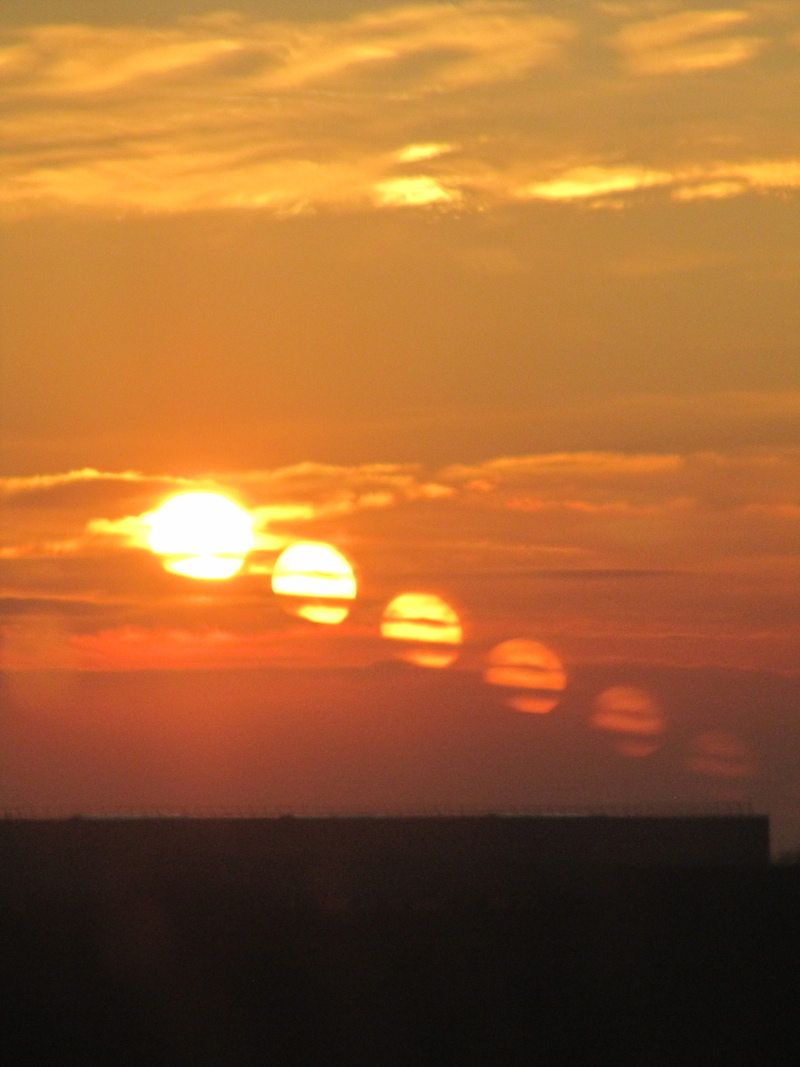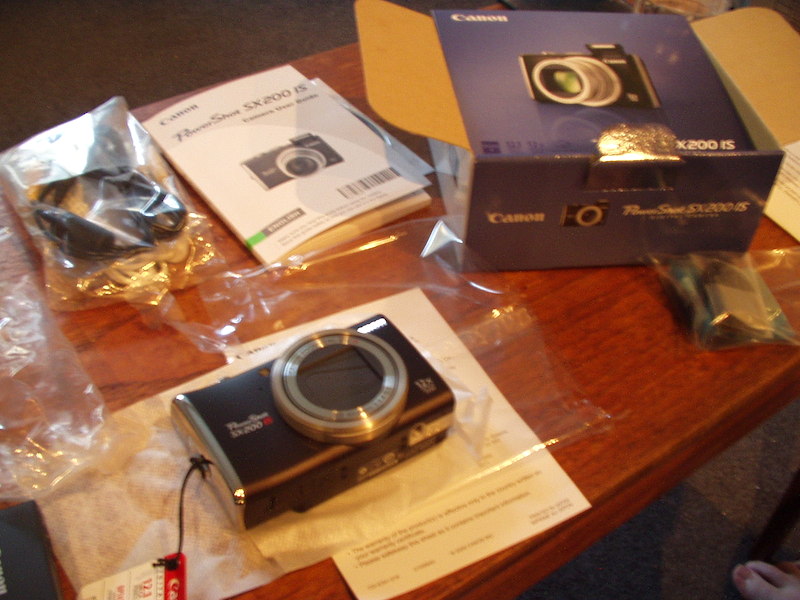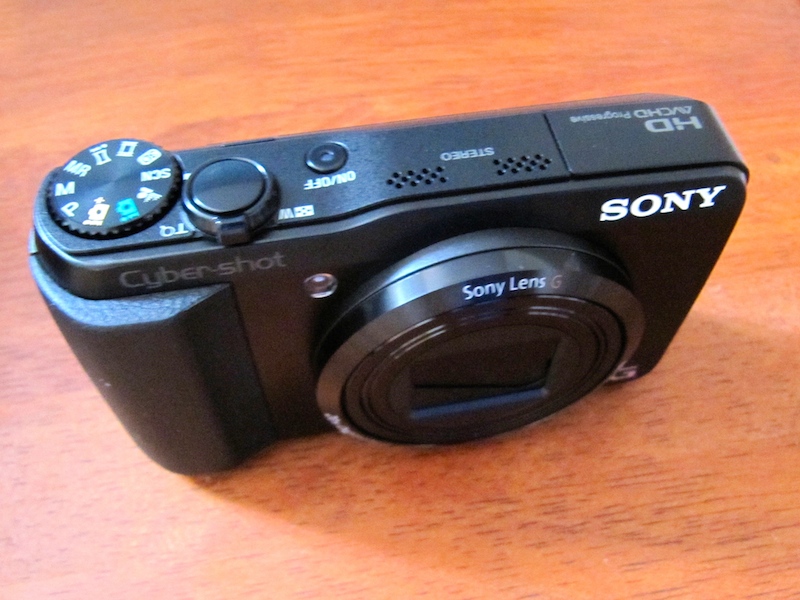Returning the Sony

I had been looking for a new camera for a while. I had only ever owned three digital cameras and I tend to use them until they fail or become utterly obsolete.
Olympus C-220 Zoom
I loved my first digital camera, an Olympus C-220 Zoom. It advertised a two megapixel photo; tiny by today’s standards of 12 to 20 megapixels.

I learned how to get the best out of that camera and stuck with it for far too long. I understood its limitations and weaknesses, but I knew its strengths. I could carry it around and get the photos I wanted without thinking. The time from pocket to photo was tiny. It was great and served me well.
I like to imagine that my Olympus is now serving someone else just as well. I sold it on eBay when we moved from Melbourne.
Canon PowerShot SX200 IS
It was my first Canon and I was taken aback by the leap in quality between my Olympus and the PowerShot SX200 IS. Many years of improvements had passed between the two and I appreciated them.

I was lucky. The PowerShot SX200 was one of the first of a new group of cameras; travel cameras designed with giant zooms and a more serious owner in mind. Those needing a smaller camera capable of capturing the sights and scenes of the backpacker. A camera good enough to argue against lugging around a DSLR.
I have always wanted a DSLR but have never been able to justify either the price or the hip-thumbing burden it would place on me. Being able to carry around a decent camera without thought or consideration is wonderful; that is something a DSLR with its massive lens and body can never offer.
Yet I still find myself studying Tim Bray’s posts on mirrorless cameras, point-and-shoots, and lens. One day maybe I will be able to justify a larger frame camera but today it does not match my lifestyle or pocket.
I mastered the PowerShot SX200 because I had to. We bought it for our wedding and honeymoon and I wanted great shots of those events.
Years passed and my PowerShot started suffering. The lens protector jammed during a holiday in Tasmania. Casing around the zoom worked itself loose and generally wear and tear has built up. This was a deliberate choice and expected.
When I bought the PowerShot, I decided to use it properly and frequently, rather than nurse it through ten years in perfect condition. I got great photos and sometimes the camera came out a little worse for wear for the shot. Yet it worked and it continues to work well today.
Sony Cyber-shot HX20V
Earlier this year I started looking for a replacement to my PowerShot. Wear and tear aside, I wanted GPS tagging. We were travelling more and being able to automatically organise my photos by location was alluring.
I searched for a long while. The obvious choice was a new PowerShot and I waited for a refresh to the product line. When it happened, the PowerShot SX280 was announced. It looked good but also a touch lacklustre compared to offerings from Lumix and Sony. The feature list was shorter. The reviews never glowing.
Then reports of battery life problems appeared. Video caused the camera to shed battery life at an alarming rate. A firmware update was released but reports of problems continued. Canon claim it is now fixed but doubts linger.
I picked the Sony Cyber-shot HX20V. My first camera with GPS and a feature list longer than my arm.

The camera was fine but not great. I never learned to love it.
Within months my spare Sony battery became faulty. Failing to hold a charge overnight, I returned the battery for a replacement. Thankfully the replacement worked.
This month, the Sony’s auto-focus started making a horrible grinding noise. I noticed it when taking video of the festival of lights. A background noise on my footage. The next night I heard the noise again and realised, with horror, it was my camera.
So now the camera and battery have been returned to Amazon for a refund. Amazon have been excellent and their after sales service is why I will continue to buy from them.
The GPS was great. It took anywhere between one and three minutes to get a position, or possibly longer but I typically gave up after three minutes. I have a slew of photos with locations associated and my photo map in iPhoto is a joy to explore.
The Sony however taught me that I do not want a feature list the length of my arm. With those features come too many options, too many settings, and too much fuss.
I never felt comfortable with the Sony. It had progress bars after taking a photo. I was never sure how long a photo would take and how long I would have to wait until I could take the next photo.
The Sony HX20V felt clever and with that I suspect it could capture great photos. Just point and shoot.
The video quality was great. Built in stabilisation was appreciated. Lots of improvements but I expect them from any new camera. The experience connecting to my Mac was not ideal but workable.
For me, I suspect a simpler camera more refined in lens and build quality matter more. I will happily apply the clever needed but I need the camera to be more of a constant and less intelligent and less tricky. Software post-processing within my camera is a waste. I have a massively powerful Mac Pro waiting at home if a photo needs post-processing; I dislike post-processing generally, so most photos remain as taken.
What Now
For now, I am back to my Canon SX200 IS. It soliders on despite the battering I have made it bear over the years. The Canon will be with me this Christmas as I capture moments from our celebrations.
Next year though I will be on the look out again for my next digital camera.